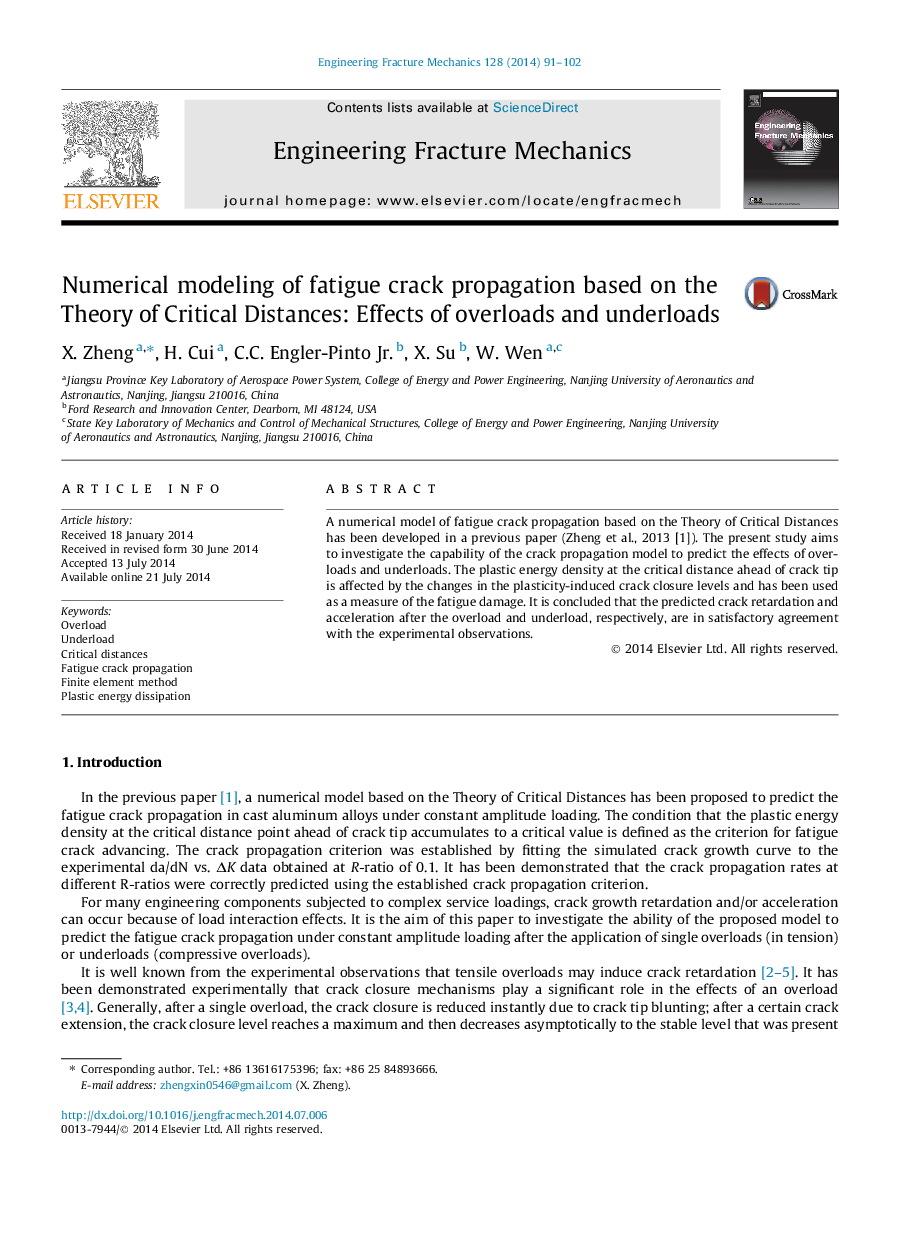| کد مقاله | کد نشریه | سال انتشار | مقاله انگلیسی | نسخه تمام متن |
|---|---|---|---|---|
| 774690 | 1463100 | 2014 | 12 صفحه PDF | دانلود رایگان |
• The model has correctly predicted the crack retardation after overload.
• The model has correctly predicted the crack acceleration after underload.
• The crack acceleration increases with underload level and constant amplitude ΔK.
• The model can directly predict fatigue crack growth rates without using stress intensity factors.
A numerical model of fatigue crack propagation based on the Theory of Critical Distances has been developed in a previous paper (Zheng et al., 2013 [1]). The present study aims to investigate the capability of the crack propagation model to predict the effects of overloads and underloads. The plastic energy density at the critical distance ahead of crack tip is affected by the changes in the plasticity-induced crack closure levels and has been used as a measure of the fatigue damage. It is concluded that the predicted crack retardation and acceleration after the overload and underload, respectively, are in satisfactory agreement with the experimental observations.
Journal: Engineering Fracture Mechanics - Volume 128, September 2014, Pages 91–102
